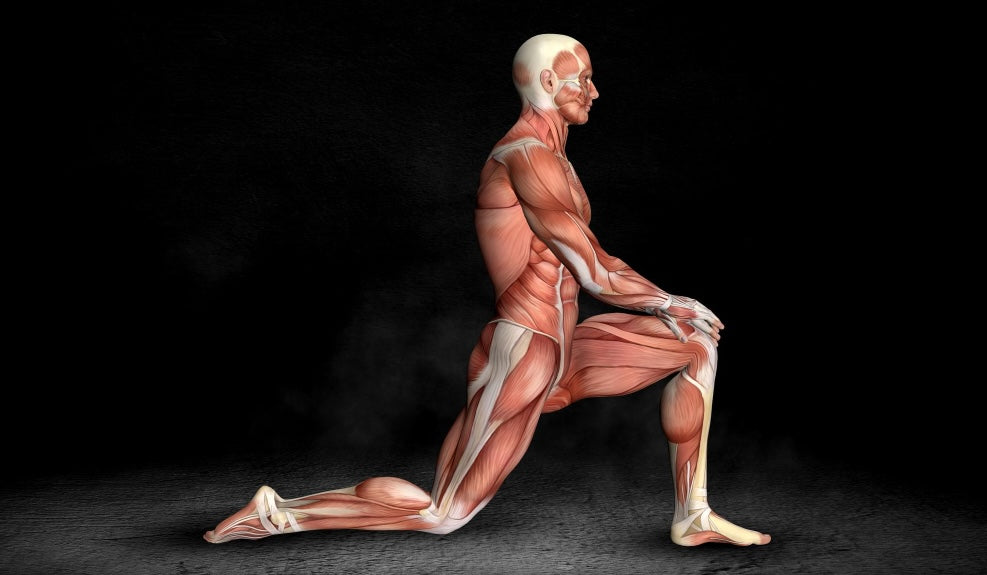
Iliacus Psoas: How to Stretch and Train
Share
The iliacus psoas is a deep muscle but vital for movement and posture. It's involved in hip flexion, spinal stabilization, and even influences breathing and core balance. Therefore, keeping it flexible and strong is essential—both for athletes and those training at home.

In this article, you will learn:
- What is the iliac psoas;
- How to stretch safely;
- Exercises to strengthen you and prevent injuries.
📍 What is the iliac psoas muscle?
The iliac psoas is made up of two muscles:
- Psoas major : connects the lumbar spine to the femur;
- Iliac : connects the pelvis to the femur.
Together, they are the main hip flexors , allowing:
- Lift your leg (walking, running, climbing stairs);
- Maintain an upright posture;
- Stabilize the lower back and core.
🧘♀️ How to stretch the iliac psoas
The psoas is a muscle that shortens easily, especially if you spend a lot of time sitting. Here are three effective stretches :
1. Kneeling stretch (runner's pose)
- Place one knee on the floor and the other foot forward.
- Tilt your pelvis forward without arching your lower back.
- Hold for 30 seconds and repeat 2-3 times on each side.
2. Bridge stretch with arm elevation
- Lying on your back, feet flat on the floor and knees bent.
- Raise your hips and stretch one arm over your head.
- Maintains spinal alignment.
3. Stretching with foam roller
- Place the roller on the front of your hip and slide it gently.
- It may be uncomfortable at first — use sparingly.
⚠️ Important tip : never force the stretch! You should feel tension, not pain.
🏋️♂️ How to train and strengthen the iliac psoas
Strengthening the psoas improves posture, lower back stability, and performance in sports like running, soccer, and dance. Here are 3 key exercises :
1. Walking with elastic band
- Put a mini band on your feet.
- Walk with your knees raised in front, keeping your core tight.
- 3 sets of 30 seconds.
2. Leg raise in supine position
- Lie on your back, one leg extended and the other bent.
- Slowly raise your straight leg without arching your lower back.
- 3 sets of 10-12 reps per leg.
3. Plank with leg raises
- In a plank position on your elbows, lift one leg at a time.
- Keeps your lower back firm and your body stable.
- 3 sets of 10 reps per side.
🛠️ Effective combination: stretch + activate
For best results, apply this logic to your workouts:
- Stretch before training or after long periods of sitting;
- Activate before compound exercises (such as squats or running);
- Strengthen regularly to prevent imbalances and injuries.
🧠 Curiosity
The psoas is connected to the lumbar plexus and can even influence the autonomic nervous system. Some experts report that excessive tension in this muscle can be associated with stress and anxiety.
📚 Related articles
- Iliac Psoas Injury: How to Treat and Recover
- Stretching exercises: Fascia lata
- Core Training: 5 Essential Exercises
✅ Conclusion
The iliacus psoas is one of the most overlooked—but most important—muscles in the human body. Whether you're an athlete or simply looking to improve your posture and well-being, incorporating stretching and strengthening exercises into your routine can make a big difference.
If you experience stiffness in your hips, lower back pain, or discomfort when walking, it might be time to pay attention to your psoas!


